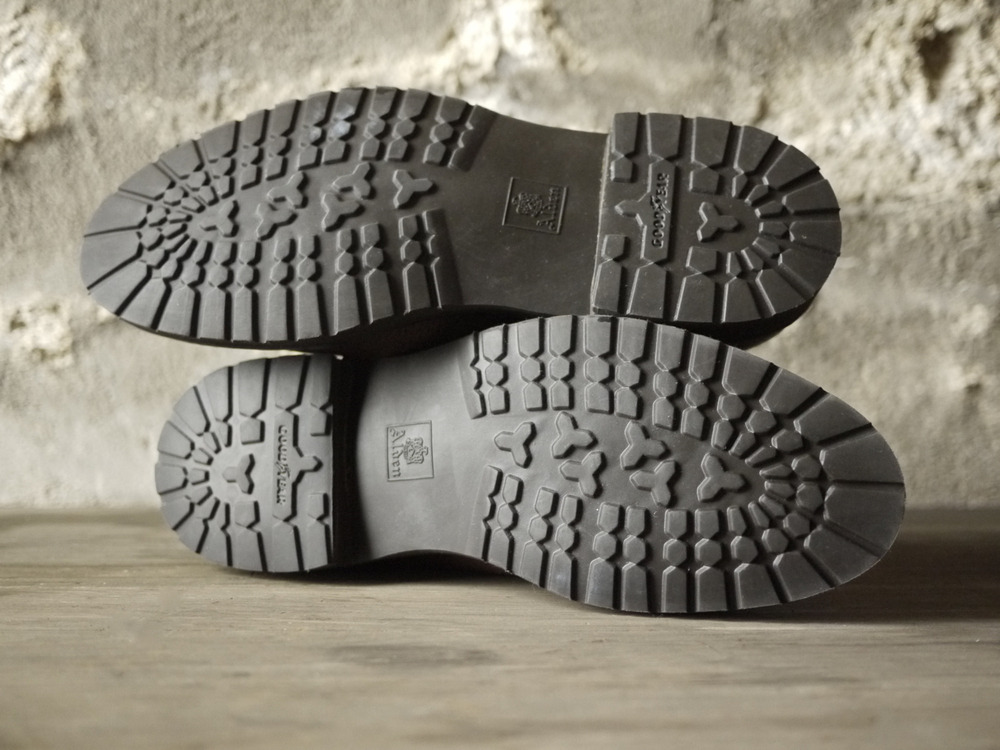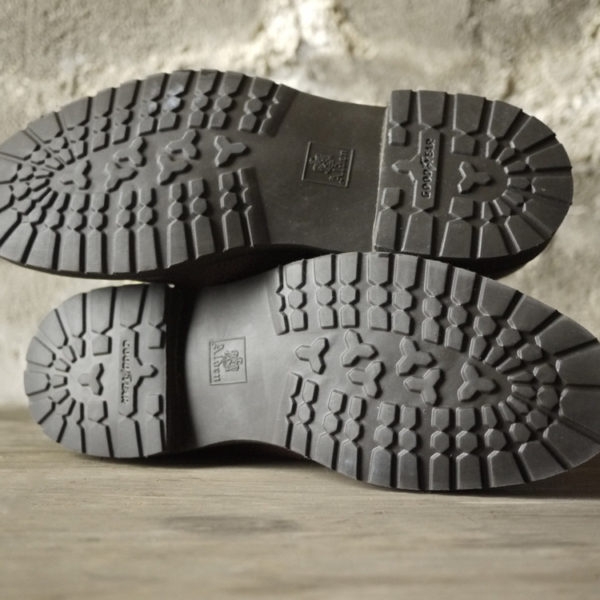
It’s been raining like crazy in the Bay Area, which has made me appreciate how much better rubber soles are on wet ground. The leather uppers on shoes can be made to take the rain quite easily. With calf or shell cordovan, you just have to apply a thin layer of wax polish. With suede, you can use some kind of weatherproofing spray. Either will make your shoes fairly water resistant (although not waterproof), but there are some caveats. With shell cordovan, for example, small little bumps can appear after the leather has been wet, but those can be brushed out with a horsehair brush. In fact, I mostly use a pair of shell cordovan boots as my rain boots.
While leather shoes can be used in the rain, ones with leather soles often can not. It’s not so much that leather doesn’t provide much traction (because it does), it’s more that untreated leather can soak up water and break down easily when wet. That’s why you need to give your shoes a day of rest in between each wear – it’s so that the perspiration from your feet can dry out and not damage the leather. Imagine, then, what’s happening as your leather soles are soaking up rainwater and grinding against hard pavement and possibly road salt.
There are a number of good options for rubber soles. Studded Dainites are the best alternative if you want to keep to a “dressier” look. They’re suitable on anything but the dressiest of shoes. Commando and Ridgeway soles are similar, but are probably best kept to chunkier looking styles. Plantation crepe is fine, so long as you don’t wear the ones that are combination of crepe and leather, as the leather tips can peel back when wet. Neoprene cork and white Christy soles are also good, as they provide nice traction and don’t have leather mid-soles you have to worry about.
If you happen to wear leather soles on a rainy day, make sure they’re dry before you wear them out again. You can set your shoes on their side to let air circulate around the soles, thus helping them dry faster. Just don’t try to speed up the process by setting your shoes near a heater. That will dry out the uppers and cause them to crack, which is much worse than prematurely wearing down the soles.
(Photo via John Dear)








